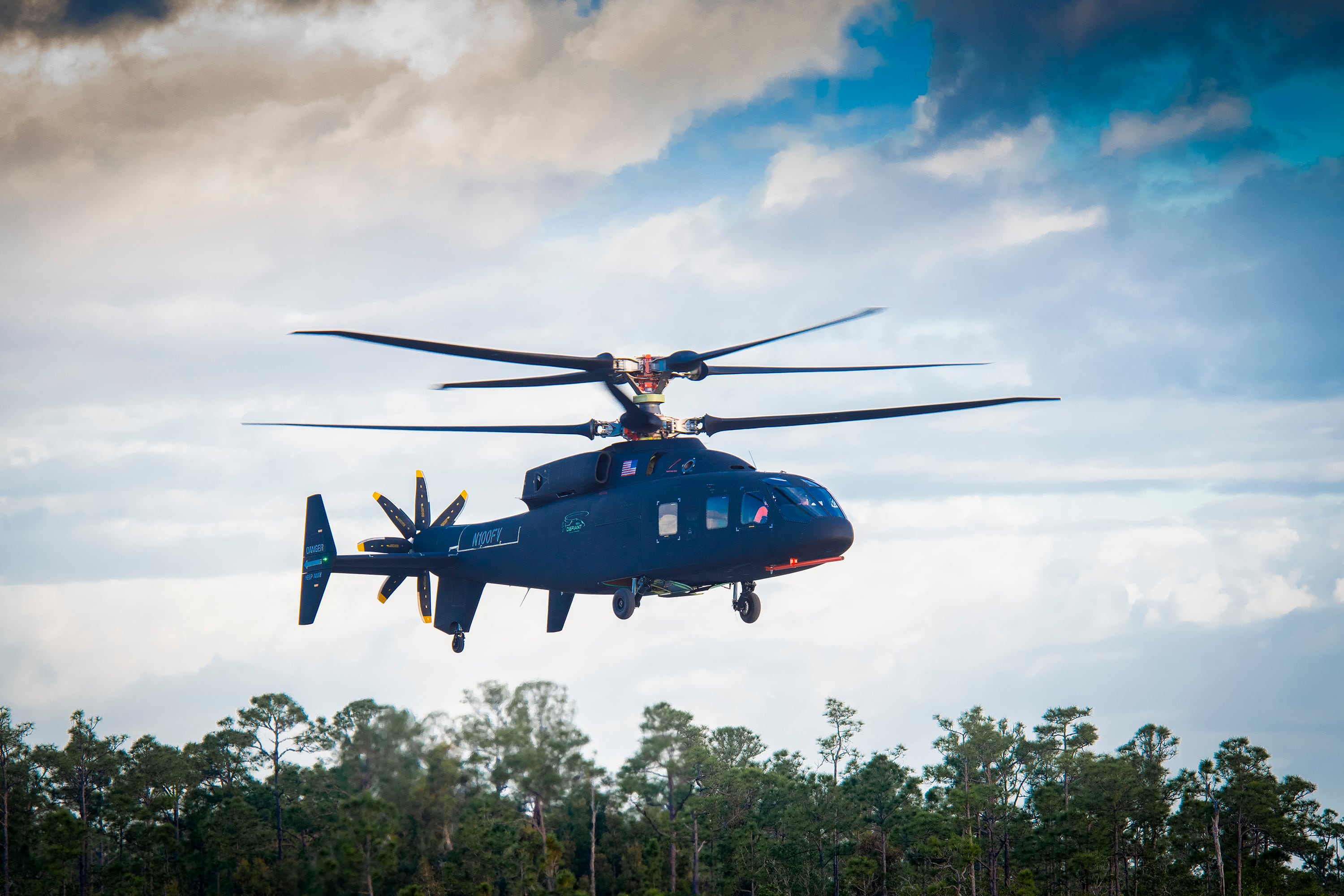WASHINGTON — The Boeing-Sikorsky SB-1 Defiant resumed flight testing in September after the companies made modifications to the demonstrator aircraft.
During the hourlong fourth sortie on Sept. 24, the Boeing-Sikorsky team demonstrated the Defiant could fly every direction at speeds of 20 knots, said Ken Eland, Boeing’s director and manager of the company’s future long-range assault aircraft program.
The Defiant is one of the aircraft taking part in the U.S. Army’s Joint Multi-Role technology demonstration, which is informing the requirements for a future long-range assault aircraft, or FLRAA.
The coaxial helicopter first flew in March and clocked in two additional flights in April. However, the companies took a pause in flight operations after discovering an issue with the gearbox of the propulsion system test bed, or PSTB, which Sikorsky and Boeing are using for extensive ground tests of the aircraft.
RELATED

“We saw a phenomenon called ‘bearing creep’ in the gearbox, and so we made a minor design tweak to keep that from becoming an issue,” Eland said. Bearing creep occurs when a bearing begins to slip, causing wear to the surface.
The problem was found during a planned disassembly and inspection of the PSTB, Eland said. Although immediately fixing the issue in both the PSTB and test aircraft added six to eight weeks to the companies’ test schedule, the Boeing-Sikorsky team opted to immediately fix the problem rather than kicking it down the road and having to absorb a larger delay to the schedule later.
“We could have gotten away with waiting on the aircraft, but … it saved us weeks, if not months, to do it now as opposed to pushing it out as far as we could and then having to make that modification ... we were still waiting for the PSTB to come back up and get more data run to expand the envelope,” he said.
A fifth flight of the aircraft is scheduled to occur in two weeks and will help to expand the flight envelope of the aircraft by pushing the speed to 40 knots. Boeing and Sikorsky officials believe the aircraft will be able to hit a top speed of 250 knots, more than the 230-knot requirement set by the Army.
Valerie Insinna is Defense News' air warfare reporter. She previously worked the Navy/congressional beats for Defense Daily, which followed almost three years as a staff writer for National Defense Magazine. Prior to that, she worked as an editorial assistant for the Tokyo Shimbun’s Washington bureau.








